First published in Range magazine.
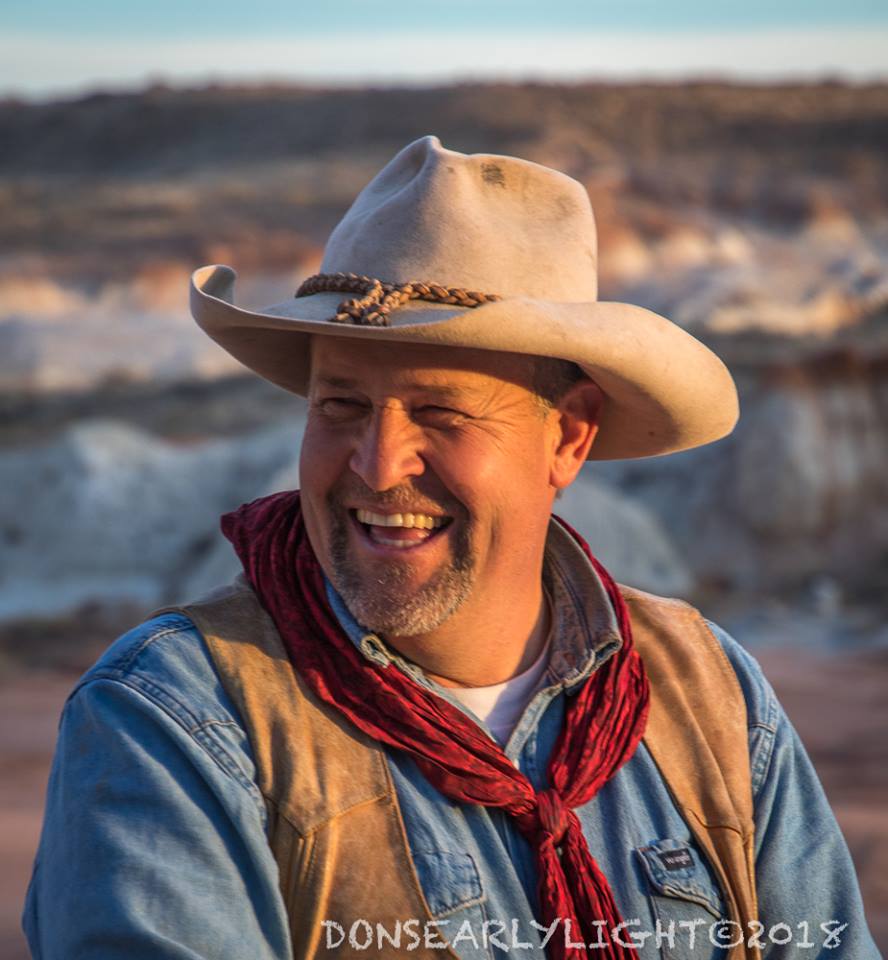
Although it would take at least a full book to examine the life and times of Ole Lindgren, and explain what makes him tick, a good place to start is with his heart.
The Eclectic Mix of a Man
Ole Lindgren is a rancher, a horseman, an artist, and a musician, but there is much more to the equation. During the stage of his life when Ole moved around, cowboying for a variety of ranches, when ranchers would ask Ole about himself in job interviews, he would say, “Well, I was born a horseman on a horse ranch, and I intend to die a horseman on my own ranch.” It usually became apparent quite quickly that he had a gift with horses, so they would typically either try to make sure that he was well-mounted, or put him on the rankest outlaws and most challenging horses they could find.
What Lindgren never disclosed was his true feelings about cows. According to Ole, “Being a sheepman in cattle country is about like being a gay Mormon in a Catholic monastery—you better keep it in the closet.” And if you add goats to the equation, you might as well be a nudist Buddhist – even most sheepmen have no use for goats.
Ole learned such lessons the hard way. At one point, fairly young in life, he worked for locally renowned cowman, Neil Mortensen, who owned a number of ranches, funded in part by a significant interest in a large producing coal mine. Mortensen had taken Ole under his wing and given him many opportunities in the ranching world. And Ole had blossomed into a top hand, broke all of Mortensen’s horses, and had essentially become his right-hand man. So Ole was really dreading the prospect of breaking the news to Mortensen that he was considering the possibility of shifting gears and buying a herd of sheep.
But one day the perfect opportunity presented itself. They had been shipping calves at Three Creeks. They were almost done when Mortensen slapped Ole on the back and said, “These guys can finish up, whad’ya say, we head to town and get a drink?”
Mortensen was in a good mood, already smoking a cigar, and this would be the perfect chance to talk. As they were driving down the road, Ole eventually mustered the courage to tell Mortensen about his plans. At that moment Mortensen shifted his cigar from one side of his mouth to the other as he always did when he was about to say something profound, so Ole knew something important was coming. Then Mortensen suddenly hit the brakes, came to an abrupt stop, and barked “Get out!” Ole attempted to protest, but Mortensen bellowed, “GET OUT!” which he did. Then Neil Mortensen squealed tires as he drove off, and never came back. At first Ole thought it might be a joke, but quickly learned that it wasn’t, as he eventually started trudging toward town in his riding boots.
Becoming a Shepherd
So Ole Lindgren was suddenly out of a job. Although he didn’t have a place to run them, he knew where he could buy a herd of sheep. And he had an idea where he might go with them. Vince Pace, forester for the Fish Lake National Forest—who had a paper hanging on the wall above his desk identifying him as “god”—had announced that he wasn’t going to allow any more sheep on Monroe Mountain unless someone could clear-off the bunch of feral sheep that had accumulated in the rocky crags near the top of the mountain and were almost impossible to gather.
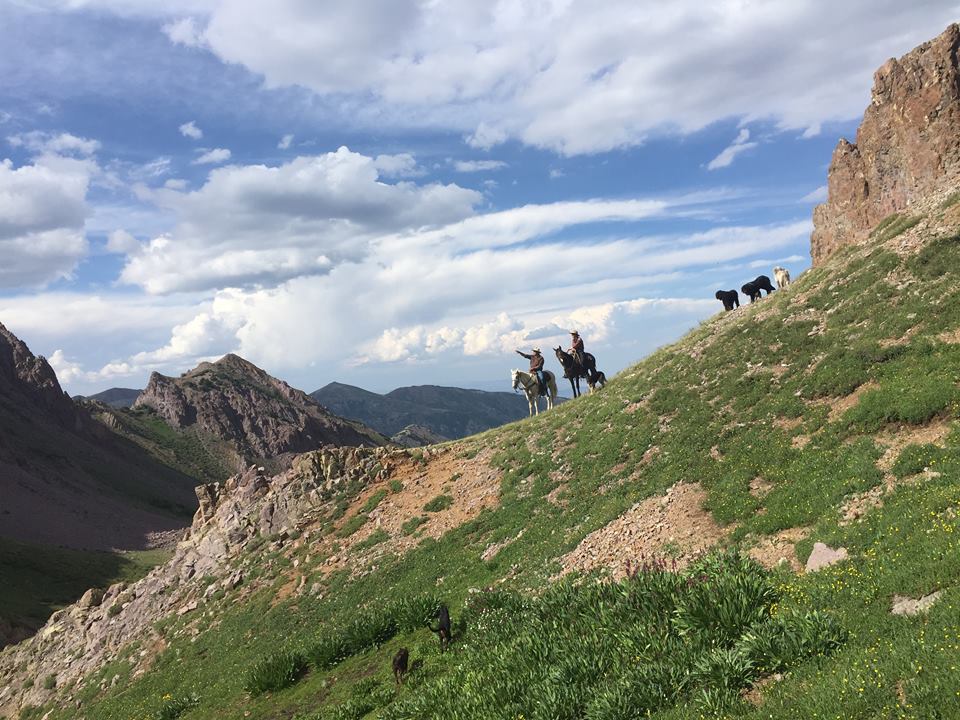
“These sheep are hammering the resource year-round, and it’s got to stop,” he said. This band of feral sheep had slowly grown every year as more and more stray sheep belonging to the aging sheep rancher who grazed the allotment had escaped from his summer herds and joined the feral band.
In addition to being a master horseman with a shepherd’s heart, Ole is also a serious dog man, and has a pack of dogs with legendary capabilities (which could be subject of a story all by itself). With god Pace’s assurance that if he could clear the feral sheep off, he would be given a probationary opportunity to use the allotment, Ole set to work. He added a very unique new dog—a greyhound/border collie cross named “Schizo” —to the mix. This was a dog that might stand a chance of cutting the feral sheep off as they dashed from the high meadows where they grazed—and stood a chance of being caught—to the cover of the rocky crags where there was no chance of catching them.
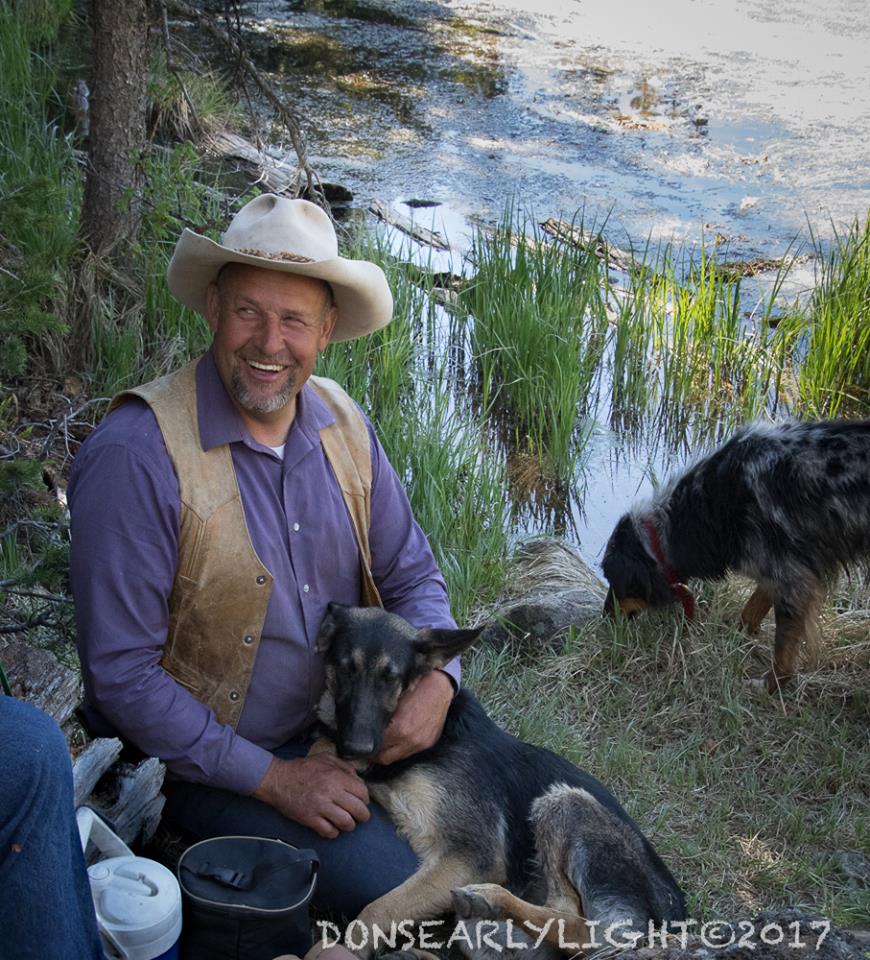
Amazingly enough, Ole’s plan worked and with the help of a pack of extremely capable dogs, including Schizo, he started slowly catching feral sheep one at a time, hog-tying them, and packing them off the mountain two at a time. Because it required two sheep to make a balanced load on each side of a pack mule heading off the mountain, sometimes Ole would have to leave a sheep tied down until the next day when he would try to catch a few more so that he could pack them off in balanced loads. With the help of his ultra-capable dogs, his pack mules, and ultimately his rifle, Ole eventually cleared every last one of the feral sheep off the allotment. He then insisted that forest god Pace join him at the local coffee shop to make the announcement that he was going to allow Ole to return with a herd of sheep to the allotment, under a myriad of strict probationary requirements to help, among other things, ensure that the feral sheep issue did not return. God Pace’s announcement that Ole had managed to clean-up the allotment and was therefore being given the chance to use it, really got the local rumor mill going.
Negotiating with god
Under this burdensome arrangement, Ole was supposed to be allowed to run about 800 ewes and lambs. But he had higher aspirations. He knew that under better management, the allotment had potential for much, much higher carrying capacity. So in addition to having an extremely competent “regular herder,” with a pack of really good sheep dogs, Ole also spent plenty of time helping herd the sheep himself for the first year or two. Although the herding was much more challenging, they started grazing the sheep almost entirely on manzanita and mountain mahogany in huge rock slides on the back side of the mountain and resting all the prime grazing areas. After the second year, Pace told Ole, “My range con tells me it doesn’t even look like you’ve even had sheep on that mountain, What the hell’s going on? What have you been up to?”
Ole said, “You’re certainly welcome to come see the sheep, we’re going to be weaning and pulling the lambs to ship next week.”
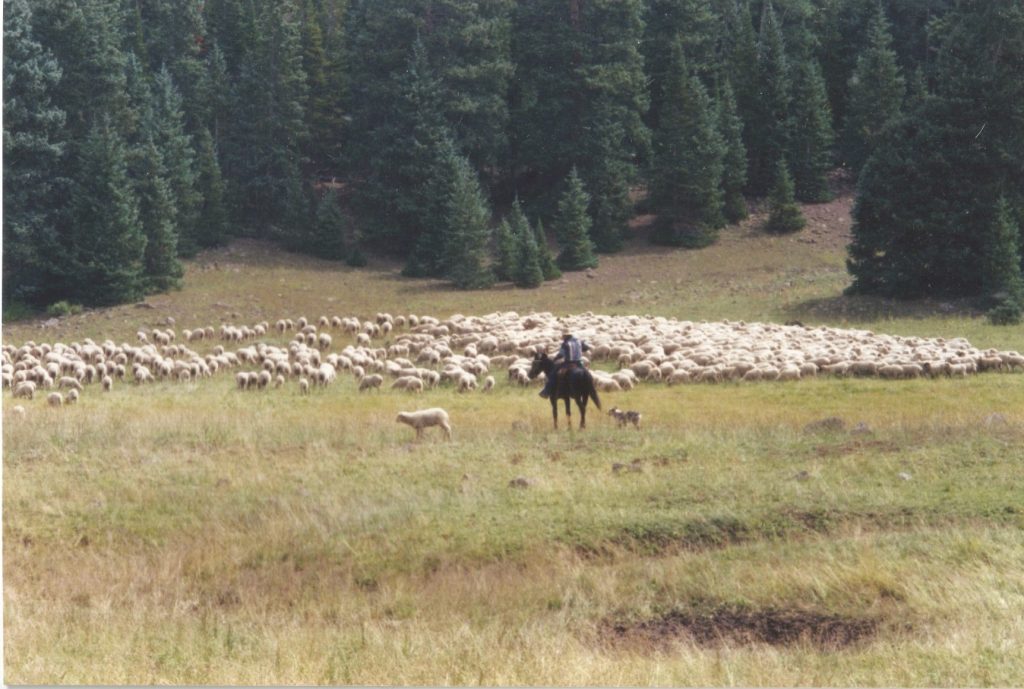
When Pace came and saw the nice big lambs for himself, Ole asked him to increase his numbers. “Do you know what it takes to get an increase?” Pace roared. “I can cut numbers as much as I want, without any explanation, but if I try to increase numbers by just five head of sheep, I’ve got people who will jump all over me, and I’ll have to document everything six ways from Sunday.”
“I understand that,” Ole said, “but if it looks this good again next year, I want an increase.”
The next summer, Pace and his range cons watched Ole and his sheep like a hawk. But again, Ole had an idea—for dealing with extra scrutiny from regular range tours. As a chef-quality camp cook, Ole would always try to feed them lunch before they looked around. Some days he would spend the whole morning preparing and cooking the meal, and then dash off the mountain to intercept or meet the touring range con(s) as they were headed up the mountain, to invite them to lunch, having carefully instructed his herder to put the meal on to heat so that it would be perfect when they arrived. Ole—who is also, and perhaps most importantly, a master storyteller—would then entertain them for an hour or two with stories while stuffing them to the gills with the best sourdough biscuits, lamb (not mutton), and delectable Dutch oven potatoes, before mounting up to look at the range.
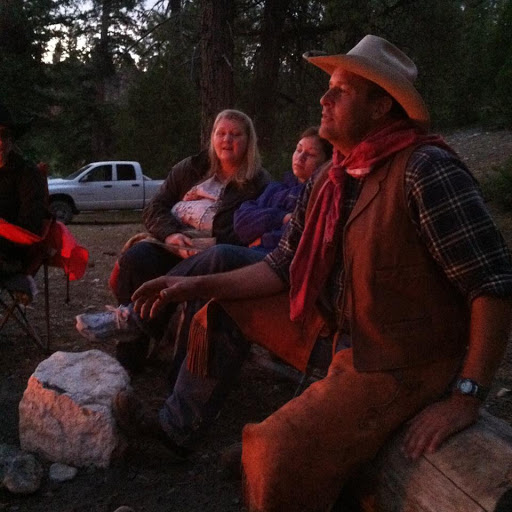
The other part of the strategy was that unlike anyone and everyone else, Ole would never let his sheep more than “pass through” the prime grazing areas including big open meadows and riparian areas, so there would be just enough sheep droppings to show that sheep had actually been there, but never the slightest sign of any abuse, leaving a super abundance of unused feed. Otherwise, they would also completely avoid all the normal high-traffic areas so they didn’t get pounded.
Eventually, Pace apparently got wise to Ole’s tactics, and started sending only his most hard-core range cons, sometimes unannounced, and he started insisting that they always pack their own lunch, so there wouldn’t be any chance of being influenced by Ole’s cooking/entertainment. But Ole developed contingency plans for that approach as well, and sometimes had the opportunity to wink smugly at his herders when even the most demanding of range cons would often end up scratching their heads and saying, “Have you even been here yet?”
Although Ole had hoped that he might be able to get a modest increase, much to his surprise, Vince Pace increased his numbers substantially. And, by the time he was done, Pace ultimately doubled the number —because, most importantly, in addition to being a master camp cook and storyteller, Ole was also an excellent range manager, with a knack for “presentation.”
Postscript: Ole Lindgren is a local living legend in South/Central Utah. In addition to being a master horseman, rancher, artist, musician, husband, and father of 11 children, Ole is a true shepherd. In the process of running 3000 head of sheep, 1500 head of goats, 100 head of horses and mules, 50 head of dogs, 11 kids, and a few milk cows – all at the same time – Ole has acquired some amazing stories, and he is a maestro storyteller.
You may also like
-
Grazing Rights Guru Dr. Angus McIntosh has Died
-
Riding the Range with Dr. Angus McIntosh –Southeast Oregon Range Rights Workshop Tour — by Redtail Rose
-
What I Learned from the Range Rights Workshops — Riding the Range — by Redtail Rose
-
Will Americans choose secession over a rigged and broken system?
-
The Property Rights Dilemma: Millard County — a Continuing Case Study

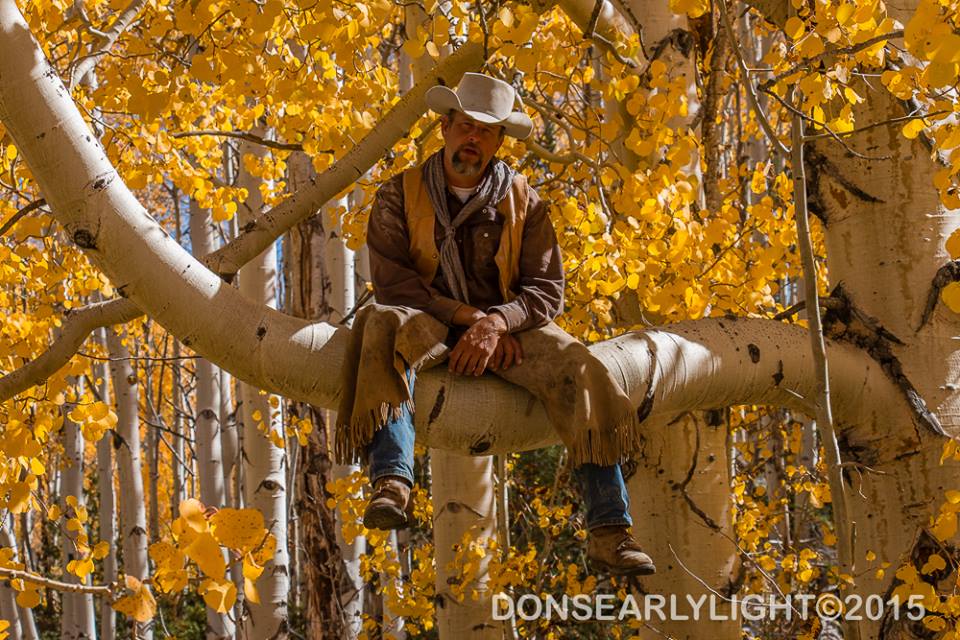
BRAVO, Ole. Thanks for “being” !